Will the Syrian Flag Emoji be changed? When?
Given recent events in Syria, Emojipedia has received many questions regarding when the country's emoji flag will be updated to reflect its new political leadership. Here we detail the process for an emoji flag's design being updated, referencing other related cases in recent years.
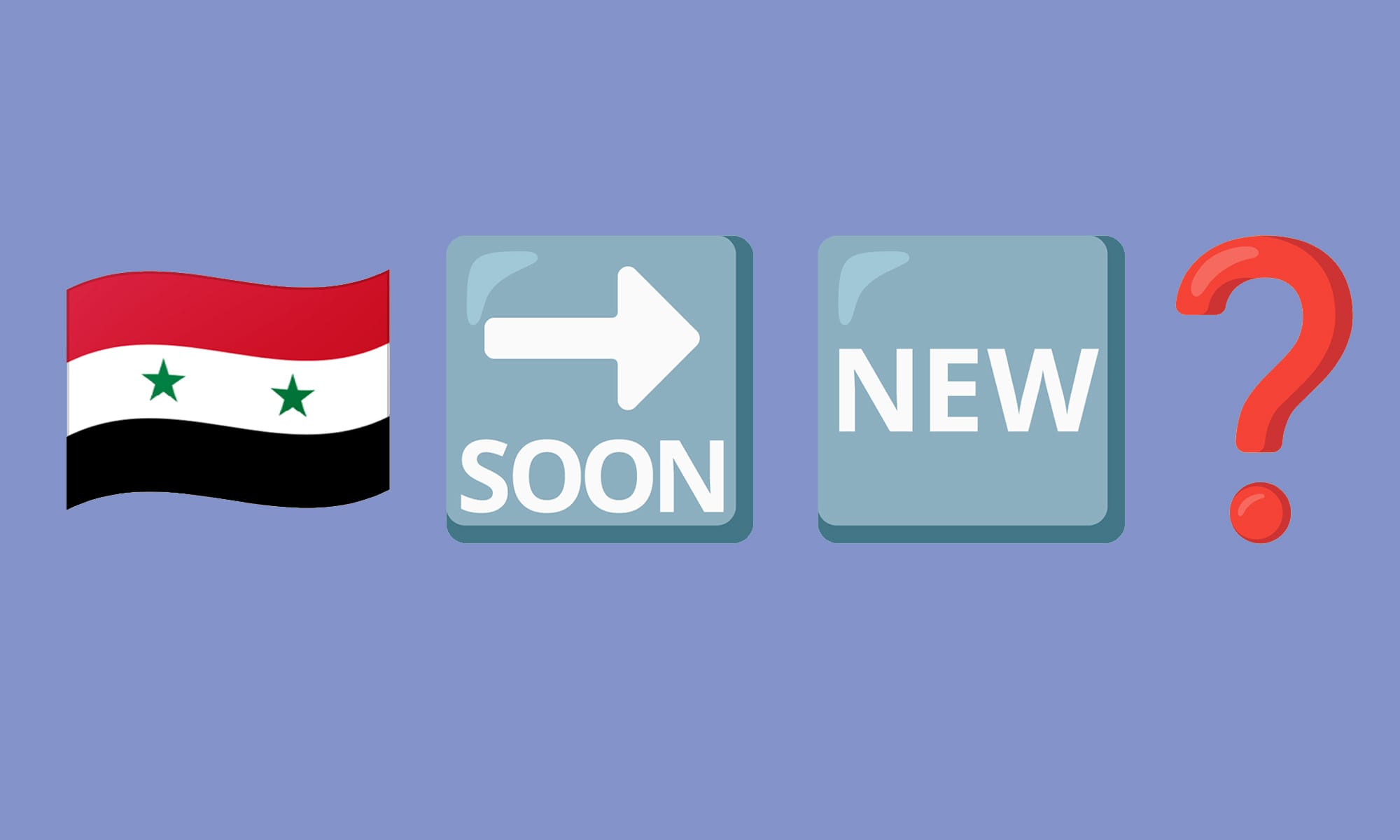
Given recent events in Syria, Emojipedia has received many questions regarding when the country's emoji flag will be updated to reflect its new political leadership. Here we detail the process for an emoji flag's design being updated, referencing other related cases in recent years.
Editor's Note 1: Since the publication of this article, Apple, WhatsApp, and Samsung have all updated the flag for Syria emoji.
Editor's Note 2: This article is a re-framed version of this 2021 article on the Afghanistan flag, updated to discuss Syria's flag and further global flag changes since the original version was published.
So, what happens to the Syrian flag emoji now?
The simplest explanation is as follows:
- Emoji flags serve as placeholders for whatever the currently recognized national flag of a country is.
- When a nation's flag changes, the corresponding emoji flag generally follows suit over time.
- Users don’t have the option to select old or historical versions of a country’s flag emoji; only one version is available at any given point.
Currently, the emoji associated with Syria displays the red, white, and black flag of the Syrian Arab Republic, the official name of the country under President Bashar al-Assad’s leadership.
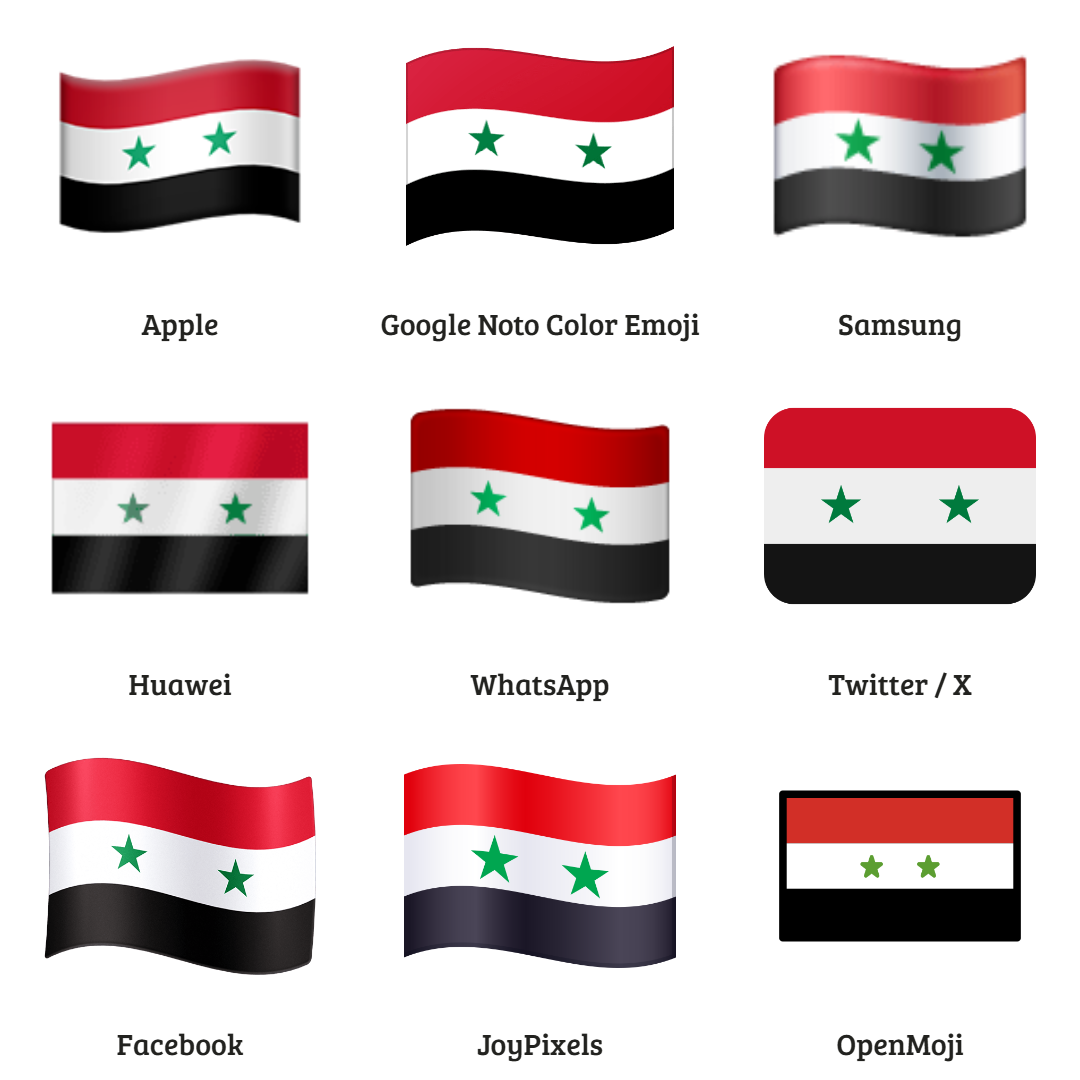
However, at the time of writing, the Wikipedia entry for the “Flag of Syria” highlights the Syrian National Coalition’s flag as the de facto symbol.
In the future, it may well be updated to show the green, white, and black flag of the Syrian opposition to Assad's regime (often called the Syrian National Coalition). This flag design harks back to the flags of the first and second Syrian Republics.

If the international community accepts this new design as legitimate, platforms may adopt it in subsequent software updates.
Ultimately, the decision on if and when to update the emoji flag design lies with major platform owners—Apple, Google, Samsung, and others—who can choose to implement such changes at their own discretion.
While Emojipedia displays many emoji designs (and makes sample designs for new emoji concepts each year), we do not have any direct sway over how vendors like the aforementioned Apple, Google, and Samsung design their emojis.
Vendors ultimately will consider how this shift aligns with international consensus and recognition, as companies are more likely to modify their emoji sets if the global community regards the new flag as the legitimate symbol of the state.
Beyond technicalities, the impact on Syrian users is a significant consideration, ensuring that the change feels appropriate and representative.
That being said, there has been notable demand on social media for such a change to be made swiftly.
I request @Apple to correct the #Syrian flag now on its emojis please. pic.twitter.com/v4uToSYxSq
— Qusay Noor (@QUSAY_NOOR_) December 8, 2024
Dear @Apple please you need to change the syrian flag emoji. This is the new flag of Syria:
— Nedal Al-Amari (@nedalalamari) December 11, 2024
Free Syria 💚 pic.twitter.com/vKG0rdmGNH
🎌 Emoji Flags
While all emoji flags might look equal, there are important distinctions both technically and in their decision-making processes.
This article focuses on country flags, which are referred to in Unicode parlance as Emoji Flag Sequences. These are created by combining two Regional Indicator Symbols corresponding to a country’s ISO code.
The idea is this: over time there could be any number of countries in the world.
So, rather than encode a new emoji for each, by using combinations of Regional Indicator Symbols such as "US" for the United States or "SY" for Syria, Unicode can recommend any possible two-letter sequence for a new nation or region to be granted an emoji flag once the ISO has formally recognized it.

In fact, Unicode has a stated policy that
It's then over to companies like Apple or Google to decide how these should be displayed on their respective operating systems (iOS or Android, for example).
For example, the contrasting styles of the 🇺🇸 Flag: United States are shown across a series of emoji vendors below. Note the different shapes, gradients, and exact choice of reds and blues—these are all chosen at the discretion of each vendor's emoji design team.
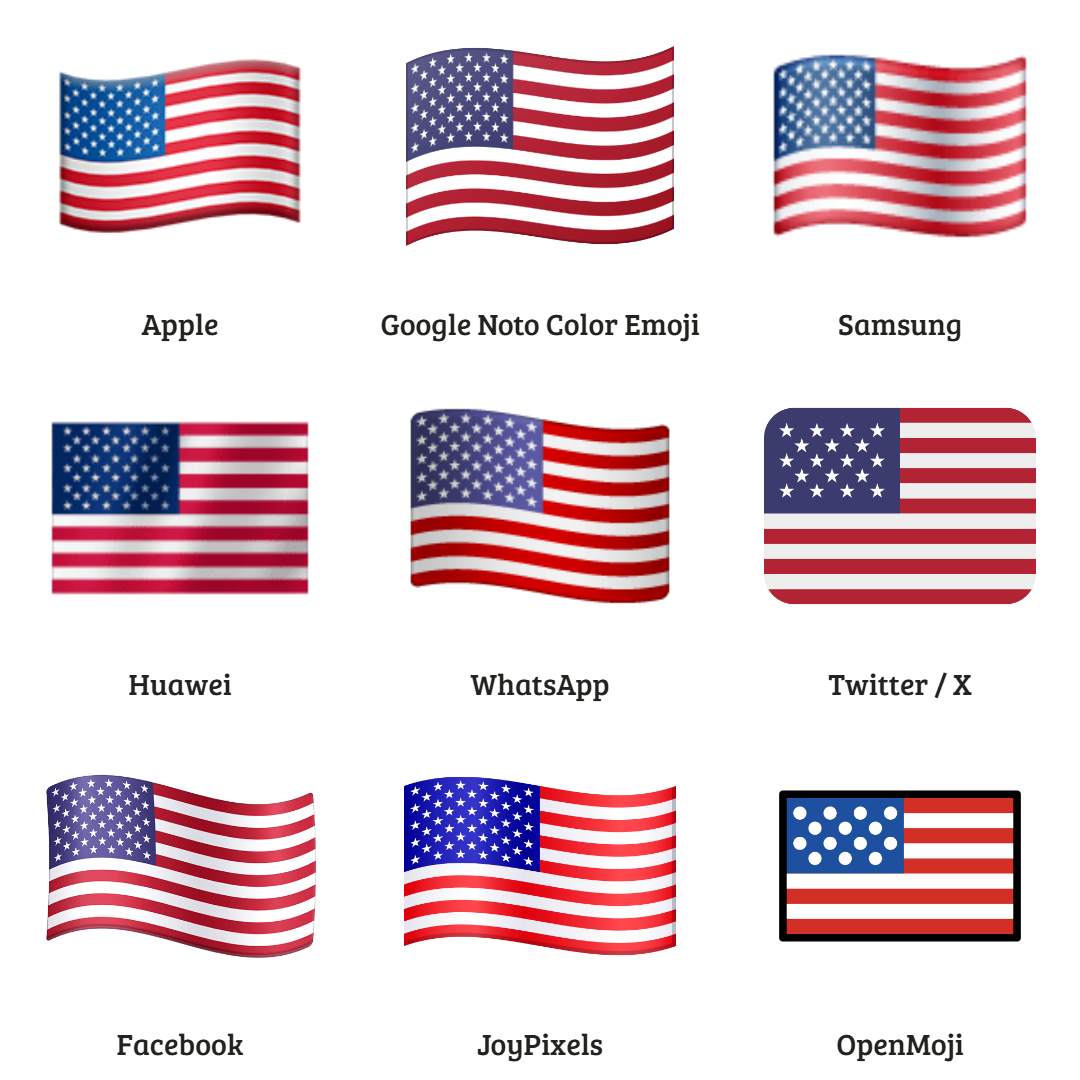
While most vendors implement designs for flag emojis, Microsoft has historically only shown two-letter country codes instead of actual flag designs for all emoji flag sequences.
While Microsoft has never commented on the reason it doesn't support emoji flags, past history when it comes to similar geopolitical decisions strongly hints at this being a considered choice.
Read more about the different types of emoji flags, and what sets them apart.
🔄 Flag Change Precedent
Flag design changes are not unprecedented in emoji history.
In 2017, Mauritania made a relatively minor change to its flag, adding a red stripe to the top and bottom. However, it took several years for this change to take effect within the emoji keyboard.
Apple updated the design in 2018 (old / new) and Samsung updated its emoji font in 2019 (old / new). As of 2024, all major platforms now show the new design when viewing 🇲🇷 Flag: Mauritania.
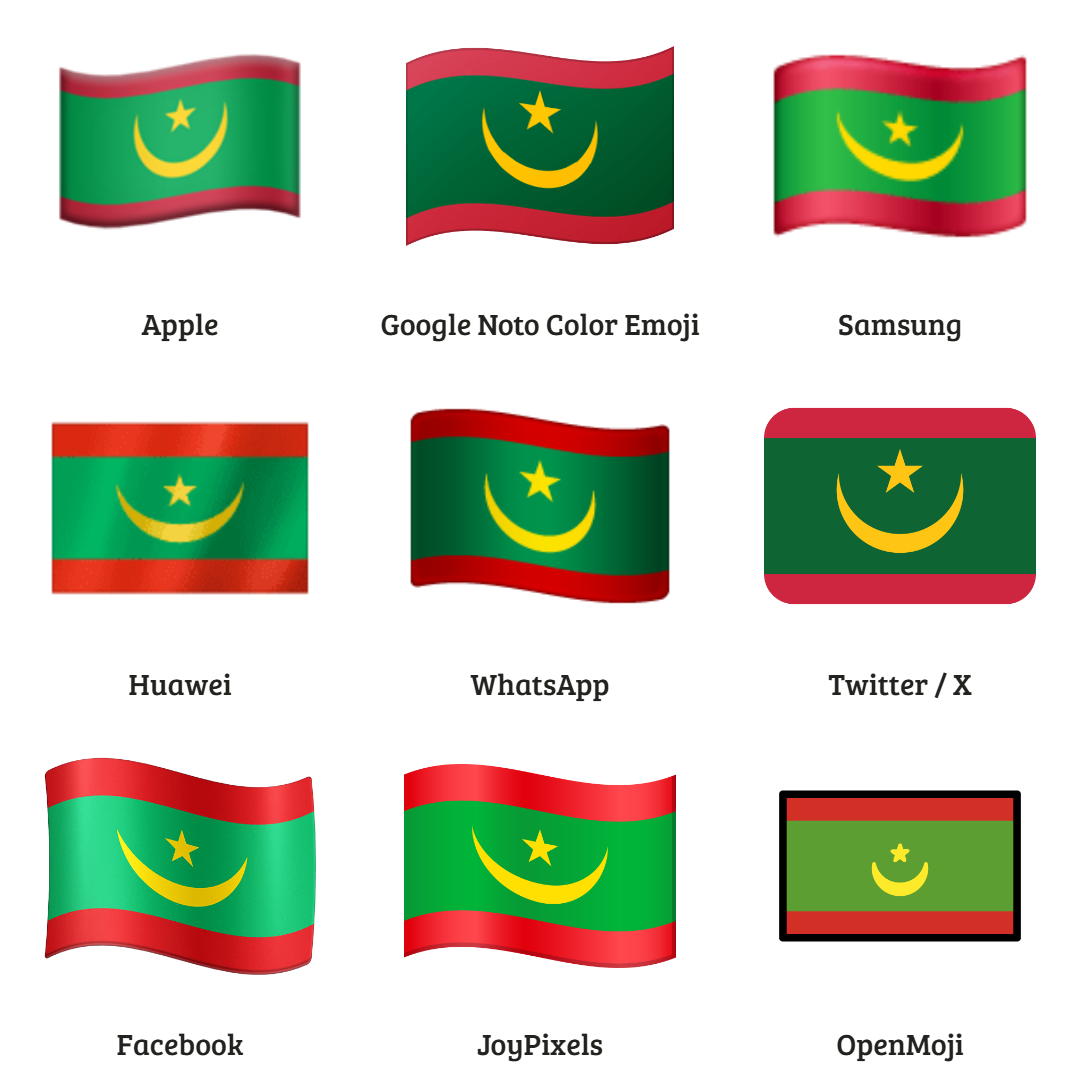
Another case involves Réunion, an overseas department and island region of France.
The 🇷🇪 Flag: Réunion emoji has seen a new consensus over time, with vendors changing their designs from the unofficial flag proposed by the Association for the Flag of Réunion (APDR) to another unofficial flag, the "Lö Mahavéli" flag design shown below.
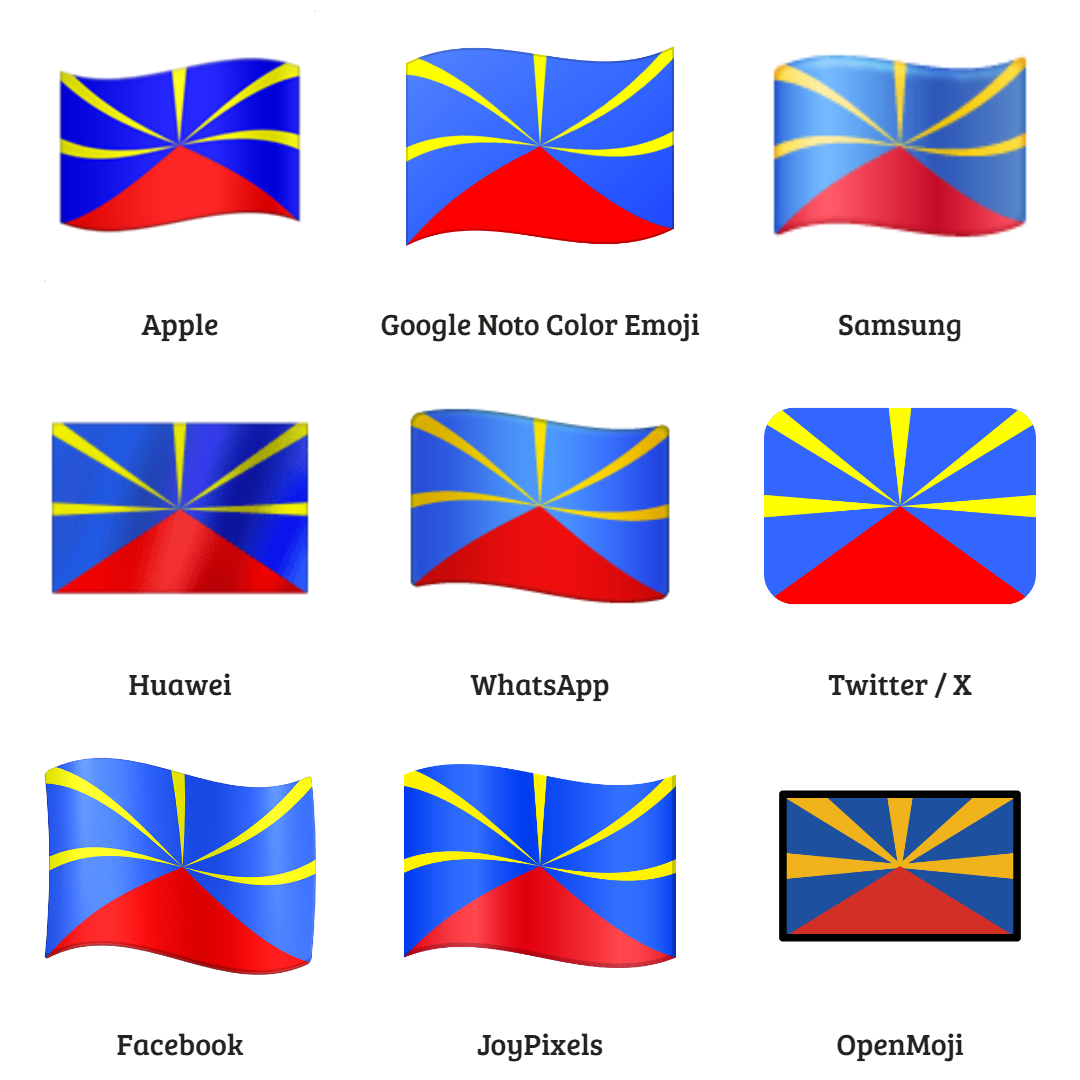
This one was made slightly more difficult by the lack of an officially agreed flag except the Flag of France. Many platforms changed from one unofficial flag of Réunion to a different unofficial flag throughout 2016-2019.
Additionally, in early 2023 an official flag for Martinique was approved by the island's assembly: the rouge-vert-noir ("red-green-black"). Like Réunion, Martinique is an overseas department of France.
Before 2023, the flag of France was the only officially recognized flag of the island, though most emoji vendors instead displayed the historical snake flag of Martinique, which was withdrawn from use in 2018.
At the time of writing, however, only Apple, Google, and Samsung have made the changes to their designs for the 🇲🇶 Flag: Martinique emoji.

🛑 Yet-To-Be-Changed Flags
Syria is not the only current nation that is now awaiting a potential change to its emoji flag design.
Three other nations have had their flags changed in recent years, though two of redesigns have been quite minor.
These minor tweaks are for the flags for Honduras and Kyrgyzstan.
While a 1949 decree specified that the stripes on the flag for Honduras should be cyan, in practice they remained dark blue for nearly seventy years, until 2022.
As of December 2024, most major vendors present the emoji’s stripes in a blue hue darker than cyan. Meanwhile, vendors that display a lighter shade have always shown it that way, meaning no actual change has taken place.
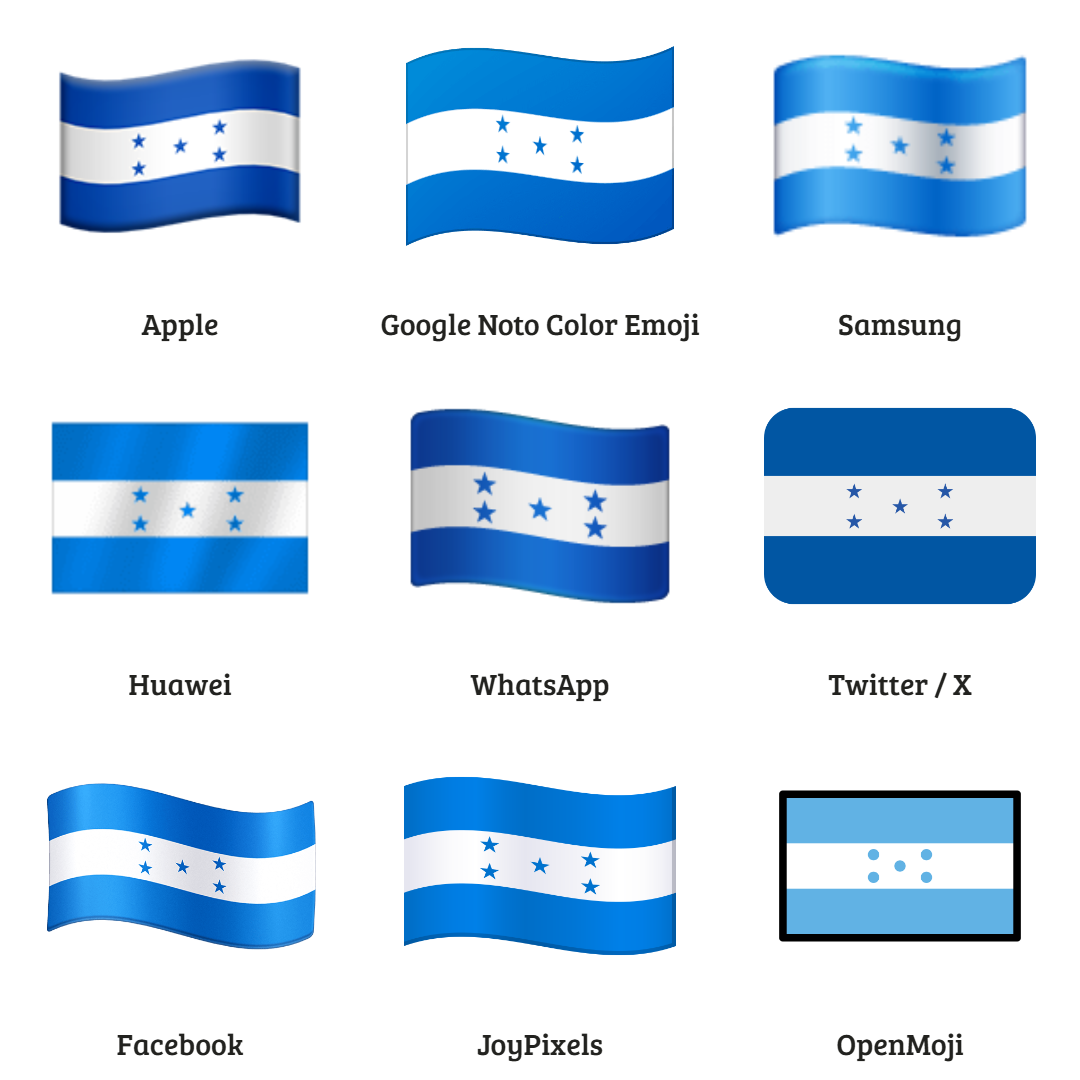
In late 2023, the flag for Kyrgyzstan was updated to straighten the previously wavy sun rays radiating from its center.
However, as of December 2024, no major emoji vendor has adjusted its designs to reflect this change. It’s possible they may not do so at all, given that such a subtle alteration would be nearly indistinguishable at the typical small sizes in which emojis are displayed.

The third instance of an emoji flag design is a much more significant and politically contentious design change than the previous two: the flag of Afghanistan.
As we wrote about in our 2021 article (from which this current article borrows heavily), the Taliban declared their movement's flag as the national flag of Afghanistan following their return to power.
However, at the time of writing the design of the 🇦🇫 Flag: Afghanistan flag emoji remains as the flag of the Islamic Republic of Afghanistan. That is: a vertical tricolor of (L-R) black, red, and green, with the National Emblem of Afghanistan in the middle.
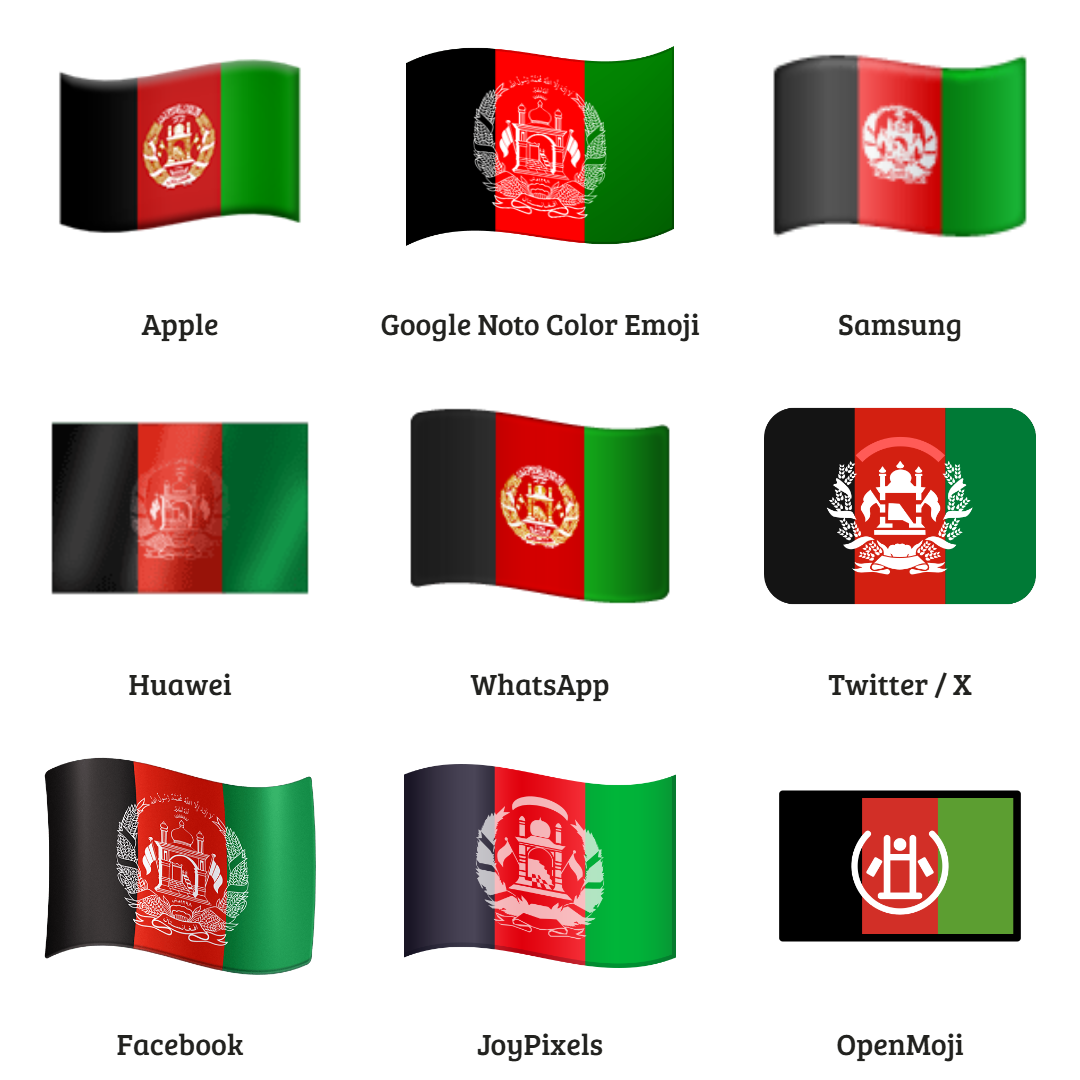
If the Afghanistan Flag emoji does change to represent the Taliban-controlled nation in the future, the meaning of any prior text that includes this emoji 🇦🇫 will change. One would need to note the date and time that was written, to ascertain the intention of the author.
🚫 No Historic Flags
Unicode does not support what it deems historical flags, which rules having different flag choices for each country based on earlier designs. The documentation for emoji proposals states:
Other regional and geopolitical flags have no mechanism within the Unicode Standard. That is, no mechanism currently exists for regions of the world or geopolitical bodies that do not have a valid Unicode region code (based on ISO/BCP47) or Unicode subdivision code (based on ISO 3166-2).
This includes historical flags (for example: South Vietnam) as well as current flags which do not have a corresponding region code or subdivision code (for example: Assyrian, Australian Aboriginal, Kurdistan, Maori, Torres Strait Islander, NATO).
This means that one of the two following outcomes will occur in the coming years:
- A change in the 🇸🇾 Flag: Syria's emoji design is applied retroactively to all instances of this emoji's use when viewed through updated devices.
- No change is made to the emoji flag, and it is left as the Syrian Arab Republic.
⏳ So what now?
In short, the future of the Syrian flag emoji depends on a combination of international recognition and vendor discretion.
While flags within the emoji set are not static, platform owners often wait for a clear global consensus before committing to a new design.
For Syria, the world now watches to see if and when the current red, white, and black design will give way to the green, white, and black emblem of the Syrian National Coalition.
